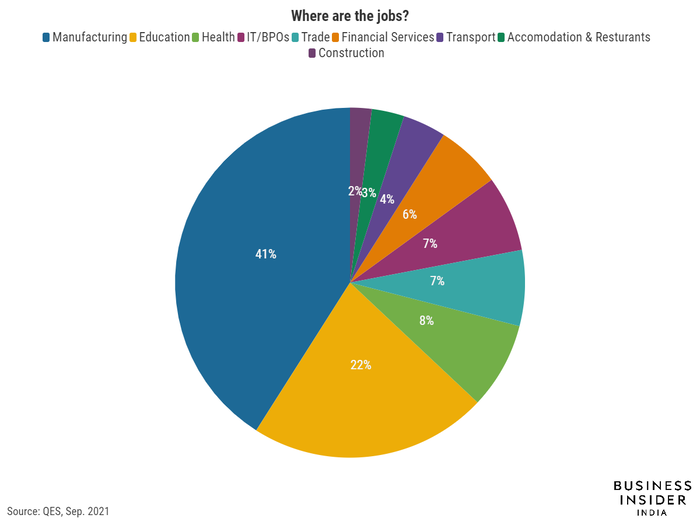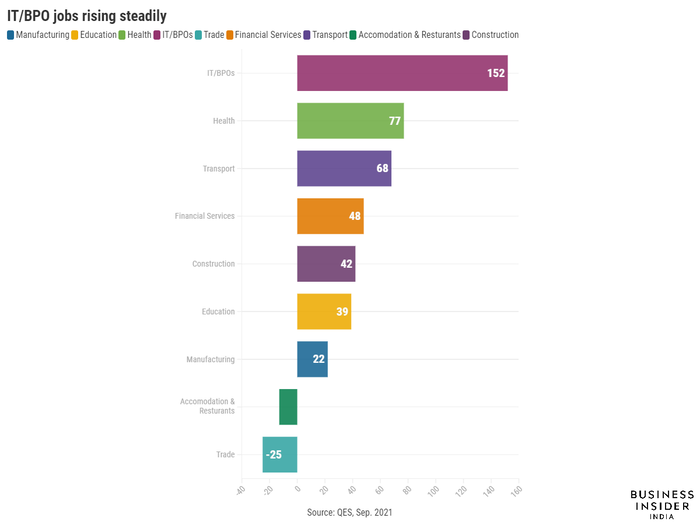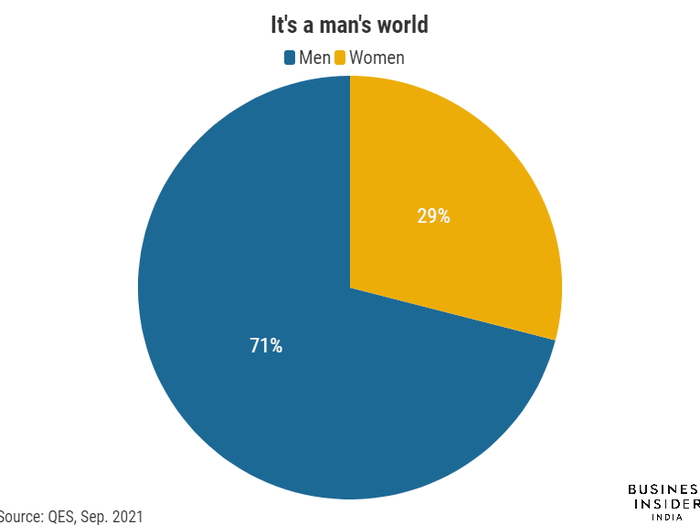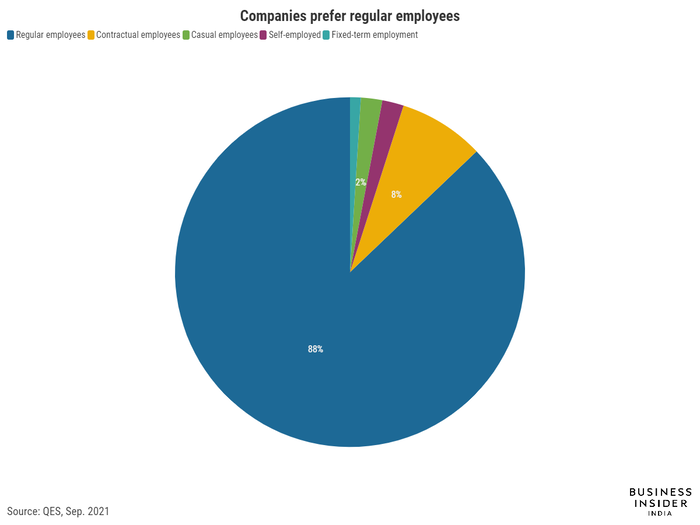Where Indians work — seven charts that show you the employment map of the world’s sixth largest economy
India has added 7.1 million new jobs in the last seven years in the nine sectors, outside agriculture, that employ the maximum number of people, according to the first ever Quarterly Employment Survey (QES) report released by the Narendra Modi government, on September 27.
The nine sectors -- manufacturing, construction, trade, transport, education, health, accommodation and restaurants, information technology/business process outsourcing (IT/BPO) and financial services, covered in the survey account for about 85% of total jobs in establishments with ten or more workers in India.
In terms of total jobs, India had 30 million individuals employed in these nine sectors, as of April 2021. As per World Bank data, India had a total of 472 million people employed in 2020.
Here are the key highlights from the survey:
The nine sectors -- manufacturing, construction, trade, transport, education, health, accommodation and restaurants, information technology/business process outsourcing (IT/BPO) and financial services, covered in the survey account for about 85% of total jobs in establishments with ten or more workers in India.
In terms of total jobs, India had 30 million individuals employed in these nine sectors, as of April 2021. As per World Bank data, India had a total of 472 million people employed in 2020.
Here are the key highlights from the survey:
READ MORE ARTICLES ON
Popular Right Now
Advertisement







